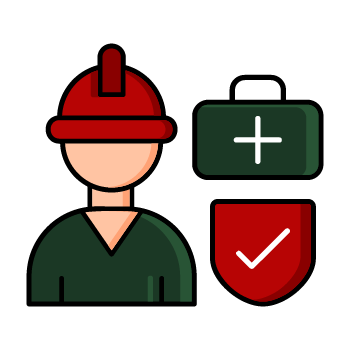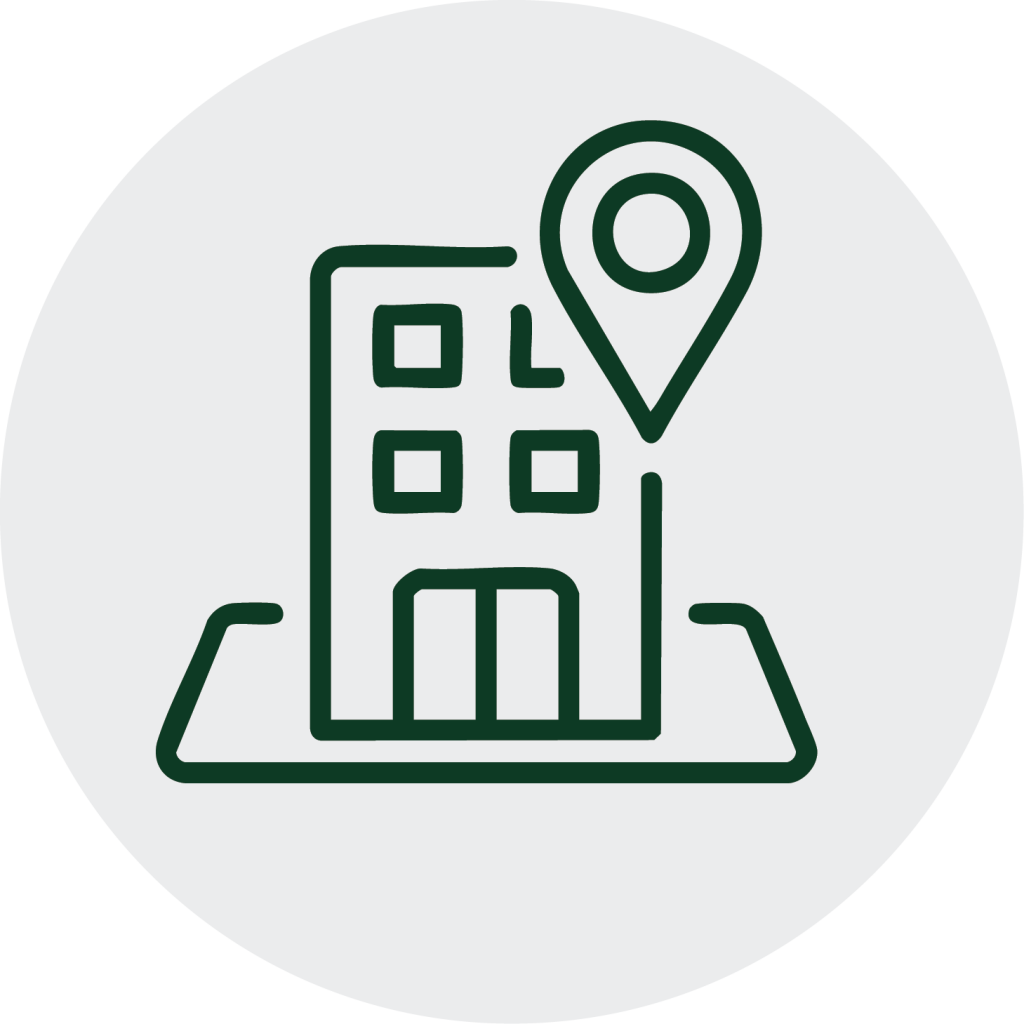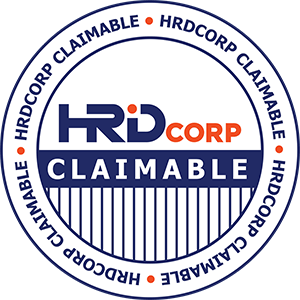INTENSIVE COURSES
INTENSIVE COURSES

Occupational Safety & Health
OVERVIEW


Duration
Stated on Each Course List

Study Options
Hybrid – Campus/ Online

Program DETAILS LIST
Please refer to the list of standalone courses below, along with their respective durations. For more details, feel free to reach out. Kindly note that all courses listed are HRD claimable.
Chemical Safety Management ( 2 dayS)
Overview: Knowledge on undertaking of activities involving chemicals in such a way as to ensure the safety of human health and the environment.
Content: Chemical management, safe handling, dangerous chemical, correct personal protective equipment to use, permissible level of exposure, safe working, transporting of chemicals, etc.
Industrial Electrical Safety for Non Electrical Personnel ( 2 dayS)
Overview: Knowledge on safety work culture while working with electrical equipment.
Content: Basic electrical safety, electrical hazard, resistance and voltage, electrical shock, safe operation of electrical equipment, working around high voltage power lines, electrical accident rescue, etc.
Ergonomics ( 2 DAYS)
Overview: Knowledge on ergonomic & manual handling hazards at workplace.
Content: Introduction to applied ergonomics and manual handling, ergonomics and manual handling concern at work, health effects due to poor practice of ergonomics and manual handling, practical ways to avoid pain and discomfort, etc.
Manual Handling ( 2 DAYS)
Overview: Knowledge on manual handling hazards and management at workplace.
Content: Introduction to applied manual handling, manual handling concern at work, health effects due to poor practice of manual handling, practical ways to avoid pain and discomfort, etc.
Mechanical Handling & Machinery Safety ( 2 DAYS)
Overview: Knowledge on mechanical handling & machinery safety at workplace.
Content: Mechanical handling, hazard and injuries relating to mechanical handling, proper operation procedures, mechanical equipment aid, safe handling procedures, Personal Protective Equipment, etc.
HIRARC (Hazard Identification, Risk Assessment and Risk Control) ( 2 DAYS)
Overview: Knowledge on hazard identification, risk assessment and risk control at workplace.
Content: Hazard classification, category, identification and identification, risk assessment methodology, risk control plan, action plan and HIRARC documentation, reporting and communication, employees training to comply with HIRARC at workplace to eliminate accidents.
Implementing Effective Safety & Health Committee in Your Respective Organization ( 2 DAYS)
Overview: Knowledge on effective safety & health committee team management in an organization.
Content: Requirements, functions, role and responsibilities, members composition, basic OSHA 1994 introduction, Safety & Health Committee (Regulation 1996), effective Safety & Health Committee meeting, OSH policy review, OSH performance management, investigation & resolution of complaint, HIRARC, incident investigation & reporting, workplace inspection, safety committee team improvement and recommendation, etc
Accident Investigation ( 2 DAYS)
Overview: Knowledge on the key elements, procedures and standard requirements for accident investigation including the specific practices and procedures to perform an investigation for each accidents happened in workplace, establish the route cause analysis, corrective actions for reoccurrence prevention and reporting to the management and authority for data compilation and further clarification.
Content: Types of accidents, identification of accident causes, injury assessment, incident/accident investigation procedures, information gathering and analysis, risk control measures, corrective & preventive action, reporting procedures, etc.
Lock Out Tag Out Procedure ( 2 DAYS)
Overview: Knowledge on lock out tag out (LOTO) procedure to outline areas in the respective work station and job task that requires lock out tag out specific action and procedures to safeguard workers from hazardous situation during servicing and maintenance of machines and equipment.
Content: Introduction/guidelines on LOTO, LOTO and its application – 3W’s – Who, When, Why, eliminating hazards and hazard controls / LOTO Device, defining tag out devices, LOTO practices audit, etc.
Safe Handling of Forklift Truck & Vehicle Policies ( 2 DAYS)
Overview: Knowledge on safe handling of forklift truck, forklift hazard, and SOP for forklift safe handling.
Content: Introduction on OSHA Act, safe handling of correct operation, basic maintenance of forklift truck & reach truck, drivers routine inspection checklist, troubleshooting, safe handling procedures, identification of operational default, etc.
Behavioural Based Safety ( 2 DAYS)
Overview: Knowledge on how to comprehend workers behavior towards safety at workplace and to correct the situation from time to time.
Content: Introduction to safety, OSH Legislations, overview of OSHA 1994/ ACT A1648 and its application towards human behavior, safety culture development, safety observation process, Personal Protective Equipment (PPE), etc.
Systematic Occupational Health Enhancement Level Programme (SOHELP) ( 2 DAYS)
Overview: Knowledge on the implementation of Systematic Occupational Health Enhancement Level Programme (SOHELP) which covers the Industrial Hygiene management at workplace particularly in the aspect of chemical management, ergonomic and noise exposure.
Content: Introduction to SOHELP, critical sector, SOHELP implementation, SOHELP Phase I, SOHELP Phase II, SOHELP- Chemical elements, SOHELP model, company role, action plan, moving forward, etc.
Hearing Conservation Awareness Programme ( 2 DAYS)
Overview: Knowledge on hearing conservation awareness to prevent the occurrence or reduce the progression of noise-induced hearing loss as a mean to protect employees from the adverse effects of loud noises.
Content: Monitoring of noise exposures, audiometric (hearing) testing, control of noise source, use of hearing protection devices, noise exposures testing, sign language, etc.
First Aid with Practical Assessment ( 2 DAYS)
Overview: Knowledge on first and immediate assistance for minor/serious illness or injury.
Content: Introduction to first aid, incident management at work, first aid for acute medical conditions, loss of responsiveness, CPR Technique (theory & demonstration), recovery position, etc.
Personality Behaviors and Psychometrics ( 2 DAYS)
Overview: Knowledge on personality behavior and psychometrics to help make decisions, develop employees and build high-performing teams.
Content: Personality types and leadership, DICS Assessment, SWOT Analysis, personality assessment, psychometric assessment, employee development, etc.
Basic Occupational First Aid, BOFA ( 1 Day)
OVERVIEW: Basic Occupational First Aid (BOFA) is a structured training program designed to equip employees with essential first aid knowledge and practical skills to manage workplace injuries and medical emergencies before professional medical help arrives.
Cardio Pulmonary Resuscitation (CPR) ( 1 Day)
OVERVIEW: Cardiopulmonary Resuscitation (CPR) is a life-saving emergency procedure performed when the heart stops beating (cardiac arrest). It involves a combination of chest compressions and rescue breaths to manually preserve brain function and blood circulation until further medical help is available.

